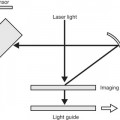9 Computer networking
| Asynchronous Transfer Mode (ATM) | A fast and expensive method of setting up a computer network; tends to be used to provide the backbone to a system |
| Backbone | A physical connection between hubs that carries all data back to the server |
| Bandwidth | The amount of information in bits per second (bps), kilobits per second (kbps), or megabits per second (Mbps) that can be sent via a communication channel or a network connection in a set period of time, i.e. the speed of the system |
| Bus |
• A set of wires between computers where two signals can travel side by side
• The signals can start and finish at any point in the system
• The bus has no control of what is sent and when it is sent
|
| Collision | When two or more computers try to send data at the same time down the same network |
| Deterministic | The method of calculating how long it will take data to travel round a network and how quickly the system can be accessed |
| Ethernet | A method of setting up a computer network developed by Xerox, using cabling to connect the parts of the system together |
| Global Area Network (GAN) | Worldwide connecting systems, e.g. |
• Internet
• Telecommunications
Hub
• Equipment that receives information from a network interface card
• Re-times the information
• Sends the information to its destination
IP Address
• Each node on a system is given its own unique number
• Formed by four larger numbers separated by dots, e.g.
• Allows data to be sent to the correct destination
ISDN ConnectionA digital telephone line allowing computer connectionsLocal Area Network (LAN)A method of linking computers, printers, etc. within a building to enable the sharing of data between computersMetropolitan Area Network (MAN)Linking of local area networks over a local districtModemDevice connecting computers to the telephone system Consists of:
• Modulator – converts computer signal to an audio signal
• Demodulator – converts incoming audio signal to a digital signal
NetworkA method of linking computers, printers, etc. to enable the sharing of data between themNetwork Interface Cards (NICs)
• Cards that control the flow of data between a computer and the hub
• Have collision detection circuits
• Therefore if two sets of data are sent at identical times from two different machines
NodeEquipment that communicates in a network, e.g.
• Workstation
• Printer
• Ultrasound equipment
Router
• Equipment that connects:
• Increases the capacity of the network
SegmentSection of a network where several nodes are linked together
Stay updated, free articles. Join our Telegram channel

Full access? Get Clinical Tree










